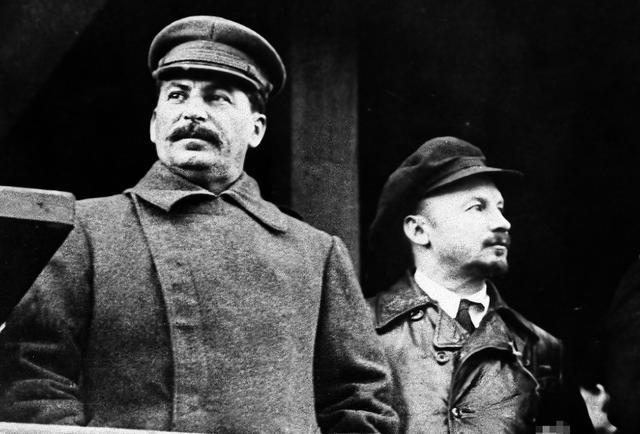(单词翻译:单击)
视听文本
Segment 23c: The Time of Terror
23段第三部分,恐怖时期
As Stalin's power grew, bad harvests in 1927 and 1928 upset the Soviet economy.
随着斯大林权力的扩张,1927年1928年歉收给苏联经济带来了困难
Stalin abandoned the new economic policy and the government went back to seizing grain from the peasants.
斯大林因此放弃了新经济政策,政府摊开手向农民催缴粮食
Those peasants who had profited from the new economic policy were called Kulaks, or fists, and singled out for brutal treatment.
那些从新经济政策中获益的农民,被称作富农,单独遭到了残忍的对待
The Kulaks' so-called resistance to war communism
富农对共产主义的抵制
convinced Stalin that the class war against bourgeoisie was not just continuing; it was intensifying.
让斯大林认识到对付资产阶级的阶级斗争并不只是仍在继续,而是加剧了
Stalin therefore decided to set up the Soviet Union's first totally planned economy.
因此斯大林决定建立苏联首个计划经济
This took the form of the first five-year plan covering 1928 through 1932.
这也就带来了1928年到1932年的第一个五年计划
Under this five-year plan, the Soviet Union went on a crash industrialization program financed by grain seized from the peasants.
在这个五年计划里,苏联利用从农民那里收来的粮食转为资金,大兴工业项目
In 1929 Stalin sped up the five-year plan by trying to turn agriculture into an industry,
1929年斯大林加速了五年计划,试图把农业国转为工业国
a form of Latifundium which sprang up during the Roman Republic.
就像罗马共和国时出现的大庄园一样
To make this happen Stalin resorted to mass terror.
为了实现这一点,斯大林进行了恐怖统治
Millions of peasants were forced into huge collective farms, which stretched over thousands of acres and employed hundreds of workers.
几百万农民被迫加入大型集体农庄,农庄绵延几千英亩并雇佣了几百位工人
视频及简介
课程介绍:
此课程介绍了斯大林与苏联。
原声视频:


